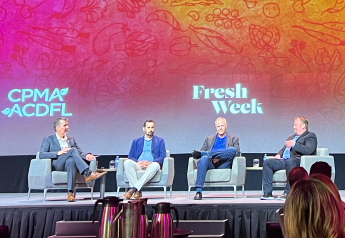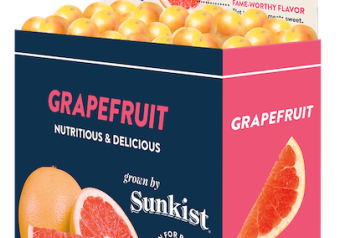What retailers and produce firms actually get from social media

When you commit time, employees and other resources to your company’s social media accounts, you want to know what you’re getting in return.
Not just for networking and showing off pretty pictures and videos of produce (hey, Instagram and TikTok), social media can be a key marketing tool for produce and retail businesses when handled strategically.
“It's a very nimble tool, it's a way to pick up on trends, it's a way to have one-on-one conversations with folks, it's your customer service — it's so many different things. But it's not the only thing,” said Cristie Mather, vice president of food at Curious Plot marketing agency based in Portland, Ore.
“It's really difficult to attribute one post to $1. But you still want to be able to measure, so you benchmark, and you look again at the things that are meaningful you,” she said.
Besides the ultimate goals of selling more product or attracting more people to your store, as well as earning repeat customers and superfans, the goals could be to gain more social followers, more likes and comments on posts, and more engagement.
Social media is for sharing stories and showing value to shoppers, but the ROI expectations differ for organic and paid social strategies, said Shea Crosby, social media manager at Stop & Shop Supermarket, the retail banner of Ahold Delhaize USA that operates more than 400 stores throughout Massachusetts, Connecticut, Rhode Island, New York and New Jersey.
“Through paid social media, we can correlate the impact of social campaigns with key metrics such as website visits, in-store shopping and e-commerce orders,” Crosby said.
Stop & Shop’s organic social media strategy focuses on building one-on-one connections and community, as well as driving overall positive sentiment to fuel brand consideration and affinity — for Stop & Shop’s brand personality to shine through.
“We take a humanized approach by highlighting the good we do in our communities, sharing cooking and shopping tips to help our customers feed the moment, and making our followers and customers feel good by interacting and having some fun engaging with them,” Crosby said.
In May, Curious Plot polled National Co-op Grocers, which represents 159 food co-ops operating almost 230 stores in 39 states with combined annual sales of $2.5 billion.
The grocers said several tactics worked for their stores, Mather said:
- Recurring promotions: “Like Taco Tuesday or Sushi Wednesday. When they're scrolling social, and they feel a prompt, they’ll feel like there's a reason to come into the store sooner rather than later.”
- Feature the employees: “Have them be in the produce department saying like ‘Wow, we have perfectly ripe melons here today. Come on out and get them. They're wonderful,’ and then slice it on camera to get people really hungry for the products that you have in stock.”
- Show the value: “If you have something on special, show exactly why the price is special right now. It's timely, getting people to come and shop in a timely manner.”
- Offer social-only promotions: “Like, ‘Show this post for 10% off.’ Again, that is a really quick-turn promotion that gets people in store; you can see that it's working because they're bringing their phones and saying, ‘Hey, I'll take that 10% off.’”
Like many marketing tools, you can’t always see the direct monetary benefit, unfortunately, but that doesn’t mean it’s not working.
Social media falls in the wide top of the marketing funnel, Mather said.
When you're getting people into your marketing funnel, the first benchmark is awareness, then consideration, narrowing down to those who make the purchase decision and then the final win and holy grail — repeat customers and loyalty.
“It just helps to know that social media is at that top end, where you're generating that awareness,” she said.
Social listening should not be overlooked, either. That means ‘liking’ and commenting on the posts, stories and reels of others in the community to be an active participant your community.
“You don't just walk into a party and start shouting things and leave, right?” Mather said. “You talk to people, you meet people, you listen, you engage. Social media, that's the social side of it. Otherwise, you're just putting it out there.”
Zale Tabakman, president of Local Grown Salads based in Philadelphia, sells indoor vertical farming equipment and uses LinkedIn the most for marketing and has seen real results.
“We use posting and comments to connect up with folks. This has led to multiple podcasts. The podcasts have brought us multiple clients,” Tabakman said.
Poll
We polled LinkedIn’s Fresh Produce Industry Discussion Group, asking: “Has participating in social media platforms produced any measurable ROI for your retail or produce supplier company?” Thirty-four respondents voted:
- Yes, direct ROI results: 18%.
- No: 35%.
- Yes, but less direct ROI: 29%.
- More engagement and brand awareness: 18%.







